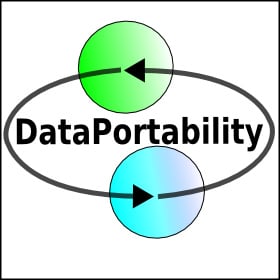After reading a blog post by Ben Goertzel about formalising Consciousness and Will using Hyperset Theory, I delved into reminding myself about some set theory and learning a lot about Hypersets.
I was quite astonished to find that the whole of the RDF language is perfect for Hyperset theory. Thank you Ben for writing that blog post, it came at a perfect time because of my recent talk at SemanticCamp was about the technologies that have and should influence the development of the semantic web, and I mentioned:
- Object Orientation
- Frames
- Semantic Networks
I can now add Hyperset Theory to the list.
What is a Hyperset (briefly)?
A hyperset is a set which can contain itself, so it is recursively declarative. A good example is a set of types, which is a type itself [1]:
Types = {Types, Booleans}
Booleans = {true, false}
To quote from Piotr Kaminskis report [1]:
The advantage is that types and instances are all part of the same model and can be treated
uniformly, which is very important for semistructured data
Which should sound very familiar to Semantic Web developers because an Ontology (a set of hierarchical classes) is defined in the same structure as a set of instances, which is (in most modern cases) RDF.
Piotr actually goes on to develop a metamodel called Braque based on Partially Ordered Hypersets (aka Hyper-pomsets), and actually applies that to the Semantic Web in a second report [2] submitted as a Master of Science Thesis.
This also comes back to something which was mentioned at SemanticCamp: “someones metadata is another persons data”. For example, a hierarchy of animal types is an ontology as it is a class hierarchy and therefore metadata, however, it is also data as names and properties are themselves atomic (this might not be the best example, but its the best I can think of at the moment).
Hyperset theory is technically a subtheory of Non-well-founded set theory.
So we, as Semantic Web developers, can learn from this
As the ontology-instances relationship is all just a lot of triples in a big set, which isn’t explicitly classical set theory and could quite easily be and often is a hyperset, we can learn from hyperset theory too. Where does it really help, where does it hinder, are there any good work-arounds which are used in hyperset theory which could be used in my RDF. These are all questions which can be asked from hyperset theory and potentially applied to Semantic Web theory.
There are similar questions that can be asked of Frames, Semantic Networks and Object Orientation. What can we learn, because the Semantic Web is just an extension of these things which provides an even longer history to the Semantic Web than what people often think of as just the Web, RDF and OWL.
References
[1] Kaminski, P. “Using Hypesets to Represent Semistructured Data”, Information Systems Modeling 2002. Available online <https://www.ideanest.com/braque/ISM2002.pdf> (Accessed: 20th February 2008)
[2] Kaminski, P. “Integrating Information on the Semanitc Web Using Partially Ordered Multi Hypersets”, MSc Thesis at the University of Waterloo. 2002. Available Online: <https://www.ideanest.com/braque/Thesis-web.pdf> (Accessed: 20th February 2008)

